Polycrylic is a popular finish in woodworking projects due to its durability and versatility. However, a common question that arises when working with this material is whether you can paint over Polycrylic. This question holds significance not only for hobbyists and DIY enthusiasts, but also for professional painters and woodworkers alike. This article aims to address this query, delving into the intricacies of painting over Polycrylic and providing useful guidance for those planning to undertake such a task.
Can You Paint Over Polycrylic?
Indeed, it is possible to apply paint on top of Polycrylic. However, it requires specific steps and preparations to ensure a successful outcome.
Latex Paint
When painting over Polycrylic, it is advisable to use latex paint. It’s a water-based paint, known for its easy application and durability. It’s able to adhere well to the Polycrylic finish, provided the surface is adequately prepared.
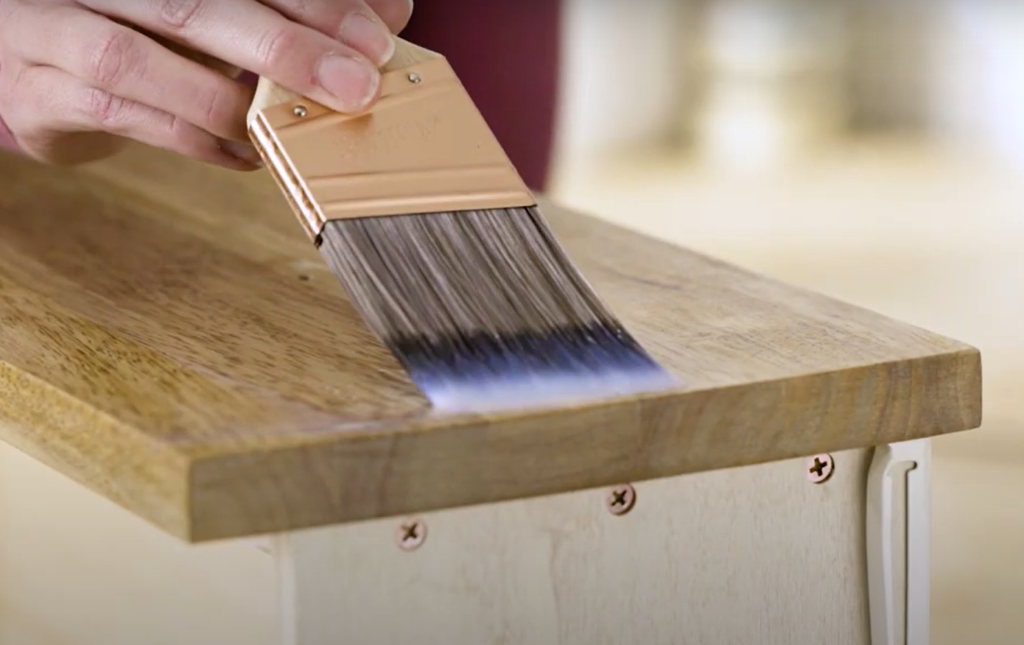
First, gently sand the Polycrylic-coated surface with fine-grit sandpaper. This step creates a rough texture, improving paint adhesion. After sanding, thoroughly clean the surface to remove dust particles and let it dry. The surface is now prepared for latex paint application. It’s wiser to apply multiple thin coats of paint, allowing each to dry thoroughly before applying the next. [1]
Spray Paint
Spray paint can be used over Polycrylic, but it requires more preparation than latex paint. Similar to latex, begin by lightly sanding the surface. Since spray paint is thinner and less opaque, it’s best to use a primer for optimal results. Apply a clear primer over the sanded Polycrylic finish, ensuring a light and even layer. Once the primer is dry, you can proceed with the spray paint application. Spray in a consistent, back-and-forth motion, maintaining a steady distance from the surface for an even coat. Similar to latex paint, it’s best to apply multiple thin coats, letting each one dry before adding the next.
Chalk Paint
Chalk paint offers another option for painting over Polycrylic. Chalk paint is versatile, with a matte finish that can create a vintage or distressed look. As with the other paints, the Polycrylic surface should first be lightly sanded to promote adhesion. Chalk paint covers well and is generally thicker than other paints, so a primer is not typically necessary. Apply the chalk paint in thin, even layers. Let each coat dry before applying the next. Depending on the desired look, you may only need one or two coats of chalk paint. Remember to seal the chalk paint with a high-quality wax or sealer for added protection and durability. [2]
Can You Paint Over Polycrylic Without Sanding?
Painting over Polycrylic without sanding is typically not recommended. The purpose of sanding is to create a slightly rough texture on the Polycrylic finish, which improves paint adhesion. Without sanding, paint may not stick well to the surface, leading to peeling or chipping over time.
This product sticks to glossy surfaces, providing a paint base that enhances adhesion. Before applying the primer, make sure the Polycrylic surface is clean and free of dust or grease.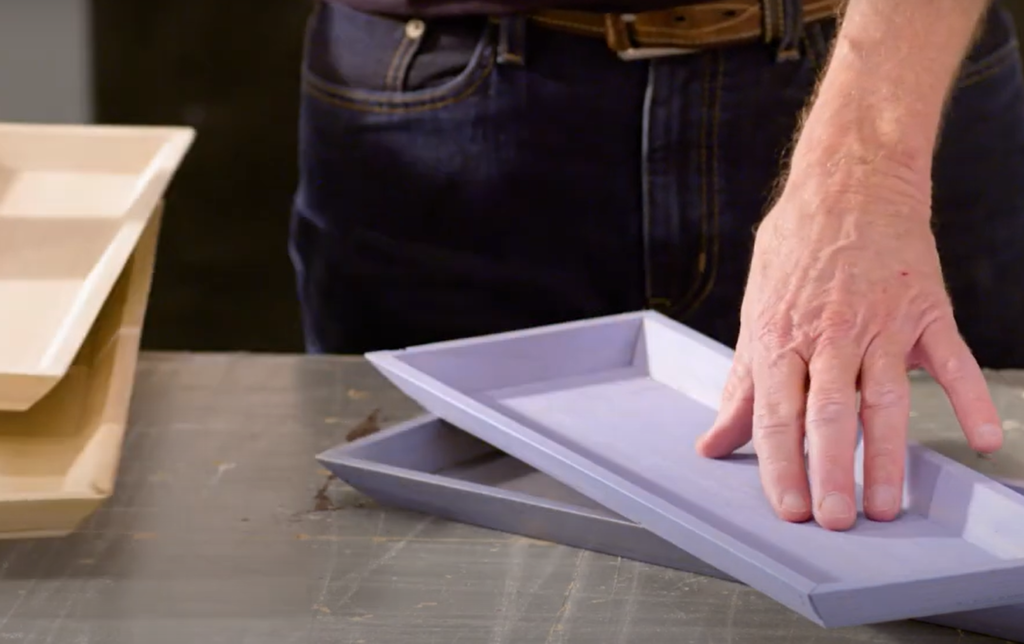
Once the primer is dry, you can start painting. For best results, apply several thin coats of paint, ensuring each one is completely dry before applying the next.
How To Paint Over Polycrylic?
To paint over Polycrylic, follow these steps for a smooth and durable finish. Here are the general steps:
- Preparation: If applicable, start by removing any hardware or fixtures from your piece. Thoroughly clean the surface using a gentle detergent and water to effectively eliminate any dirt, dust, or grease that could hinder adhesion. Allow the surface to fully dry before proceeding to the next step.
- Sanding: Lightly sand the Polycrylic-coated surface using a fine-grit sandpaper (220 grit is recommended). The aim is to create a slightly rough texture that can provide better grip for the paint. Be sure to sand evenly across the entire surface, paying special attention to edges and corners.
- Cleaning: After sanding, use a damp cloth to wipe away any remaining dust. This step is crucial as any leftover dust may get mixed with your paint, affecting its smoothness and finish.
- Priming (If Necessary): If you’re using spray paint or if the Polycrylic finish has a high gloss, it is recommended to apply a layer of clear primer. This step helps improve paint adhesion and provides a uniform base for the paint.
- Painting: Once the surface is dry, you can start painting. When using latex, spray, or chalk paint, remember to apply thin, even coats. Ensure that each coat is completely dry before proceeding to apply the next one. The number of coats needed will vary based on the paint type and desired level of opacity.
- Sealing (If Necessary): If you’ve used chalk paint, you’ll need to seal it with a wax or sealant to protect the finish and enhance durability. [3]
Remember, the key to a successful painting job over Polycrylic lies in preparation and patience. Take your time with each step, and you’ll be rewarded with a beautiful, durable finish.
How To Prepare Polycrylic For Paint?
To prepare Polycrylic for paint, follow a series of steps for optimal paint adhesion and a smooth, durable finish. Allow me to guide you through the process:
- Clean the Surface: Start by cleaning the Polycrylic-coated surface thoroughly. To clean the surface, gently wipe it using a gentle detergent diluted in warm water and a soft cloth. This step guarantees the elimination of any dust, dirt, or grease that may hinder the paint from adhering properly.
- Sanding: Once the surface has been thoroughly cleaned and dried, gently sand it with fine-grit sandpaper (220 grit is recommended) to achieve the desired result. Sanding creates a slightly rough texture on the Polycrylic finish, improving the grip for the paint. Ensure you sand evenly across all areas, paying special attention to the corners and edges.
- Clean Again: After sanding, clean the surface to remove any dust or residue. Wipe it with a damp cloth and let it dry completely before proceeding.
- Apply Primer (If Necessary): Applying a primer may be necessary, depending on the type of paint you intend to use. For example, if you’re using spray paint or the Polycrylic surface is particularly glossy, applying a primer would be beneficial. A clear primer is usually recommended, as it enhances paint adhesion and provides a uniform base for the paint.
How Long Should Polycrylic Dry Before Applying Paint?
The drying time of Polycrylic can vary based on factors such as the thickness of the application and the surrounding environmental conditions.
This time allows the finish to harden enough to support the additional layer of paint. Before painting, it is of utmost importance to ensure that the Polycrylic is thoroughly dry. Applying paint on a wet or partially dry surface may result in issues such as peeling or bubbling.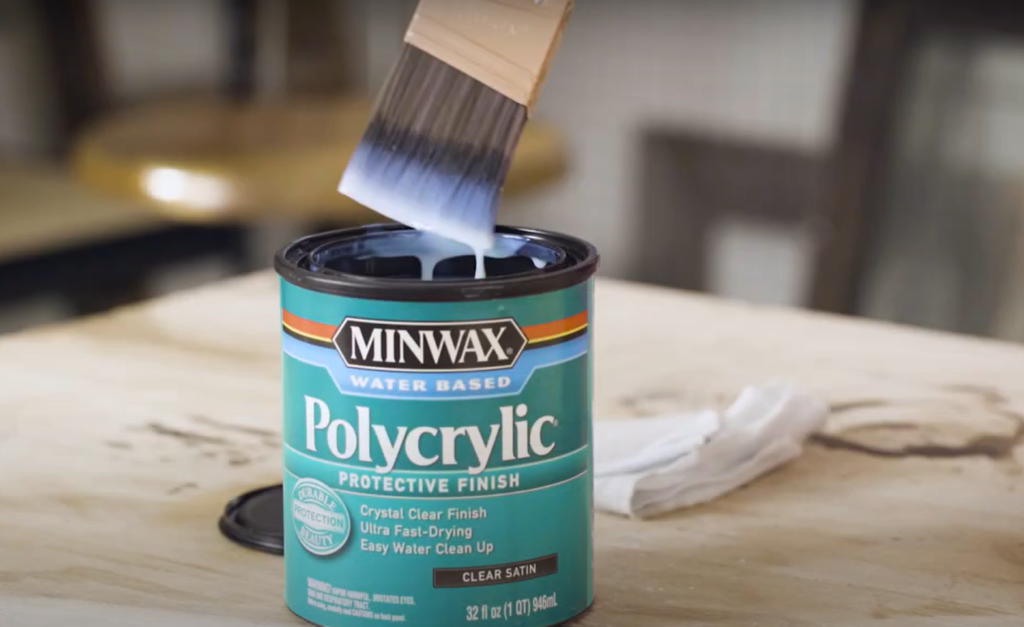
If you have the time, waiting overnight is a safe bet to ensure the Polycrylic is entirely dry and ready for paint. Always remember to check the manufacturer’s instructions as they may have specific recommendations based on their product formulation. [4]
What Can You Not Paint Over Polycrylic?
Despite its versatility, certain types of paint may not adhere well to Polycrylic. Oil-based paints, for instance, are generally not recommended for use over Polycrylic as they can cause the finish to yellow over time. Similarly, lacquer paint is also not advisable as it may react with the Polycrylic, leading to cracks or peeling.
Always ensure to check the compatibility of the paint you plan to use with Polycrylic to avoid any unwanted reactions or durability issues.How To Apply Polycrylic Over Paint?
Applying Polycrylic over paint is an effective way to seal and protect the painted surface, enhancing its durability and gloss. Below is a comprehensive, easy-to-follow guide outlining the step-by-step process of accomplishing this task:
- Clean the Surface: Start by ensuring the painted surface is clean from any dust, grime, or grease. A clean, dry cloth can be used to wipe off loose dust, while mildly soapy water can help remove stubborn grime. Ensure that the surface is thoroughly dried before moving forward.
- Sand the Surface (If Necessary): To enhance adhesion, consider lightly sanding the painted surface if it appears excessively glossy or smooth. Utilize a fine-grit sandpaper, such as 220 grit or higher, followed by the removal of any dust residue using a clean, damp cloth.
- Apply the First Layer of Polycrylic: Using a high-quality synthetic brush, apply a thin coat of Polycrylic to the surface, following the grain direction. Ensure that the application is even and avoid over-brushing as it can lead to visible brush strokes.
- Dry and Sand Between Coats: Let the first coat dry for a minimum of 2 hours. Afterward, gently sand the surface using fine-grit sandpaper to ensure an even application of the subsequent coat. Before proceeding, make sure to wipe away any dust.
- Apply Additional Coats: Apply a minimum of 2-3 coats, allowing each coat to fully dry before adding the next. This method will result in a robust and long-lasting finish.
- Final Drying: Once the final coat is applied, allow the piece to dry for at least 24 hours before using. This ensures the Polycrylic is fully cured and hard enough to withstand use. [5]
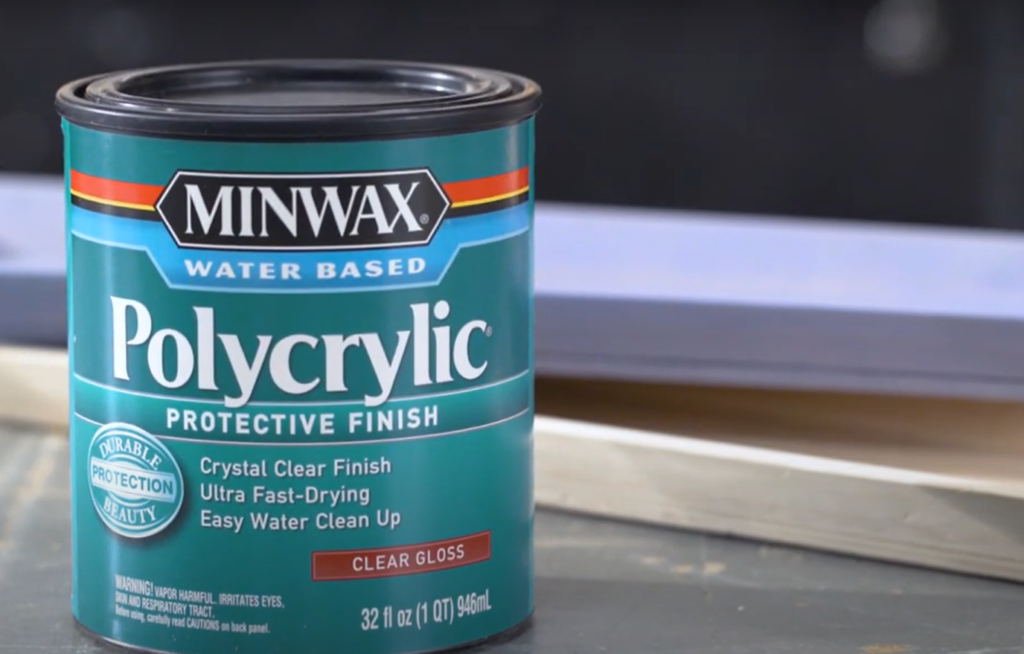
Keep in mind that patience and thorough preparation are vital for achieving a flawless and long-lasting finish when applying Polycrylic over painted surfaces. Always check the manufacturer’s instructions as they may have specific recommendations based on their product formulation.
FAQ
Can you paint over polyurethane?
Yes, painting over polyurethane is possible, but similar to Polycrylic, the surface needs proper preparation for the paint to adhere well. This typically involves cleaning the surface, sanding it down, and applying a primer. Both oil-based and latex paints are compatible with polyurethane finishes. However, it’s crucial to bear in mind that, over time, oil-based paints may exhibit yellowing. To achieve optimal results, it is crucial to verify the compatibility of the paint with polyurethane and diligently adhere to the manufacturer’s instructions.
Can you put Polycrylic on acrylic paint?
You can apply Polycrylic over acrylic paint. Polycrylic is a fantastic option for safeguarding acrylic paints due to its water-based formula and non-yellowing properties. It adds a protective coating over the paint, enhancing its durability and providing a glossy sheen. Ensure that the acrylic paint is thoroughly dry before applying Polycrylic. Apply the Polycrylic in thin and even coats, ensuring that each coat is allowed to fully dry before applying the next layer. Lightly sanding between coats can help achieve a smoother finish, enhancing the overall quality of the final result. As always, follow the manufacturer’s instructions for specific application details and drying times.
Can you brush on Polycrylic?
Yes, you can brush on Polycrylic. Indeed, to achieve a flawless and uniform finish, it is advisable to utilize a top-notch synthetic brush when applying Polycrylic. It’s important to ensure the brush is clean and free from loose bristles to avoid any imperfections on the surface. When applying, use long, even strokes and follow the direction of the grain if applicable. Over-brushing can lead to visible brush strokes, so try to apply the finish evenly in one pass. For optimal results, it is imperative to consistently adhere to the instructions provided by the manufacturer.
Is Polycrylic waterproof?
Polycrylic is not entirely waterproof, but it is highly resistant to water and other forms of moisture. This makes it a popular choice for sealing surfaces that might be exposed to water or humidity, including furniture, cabinetry, and various indoor crafts.
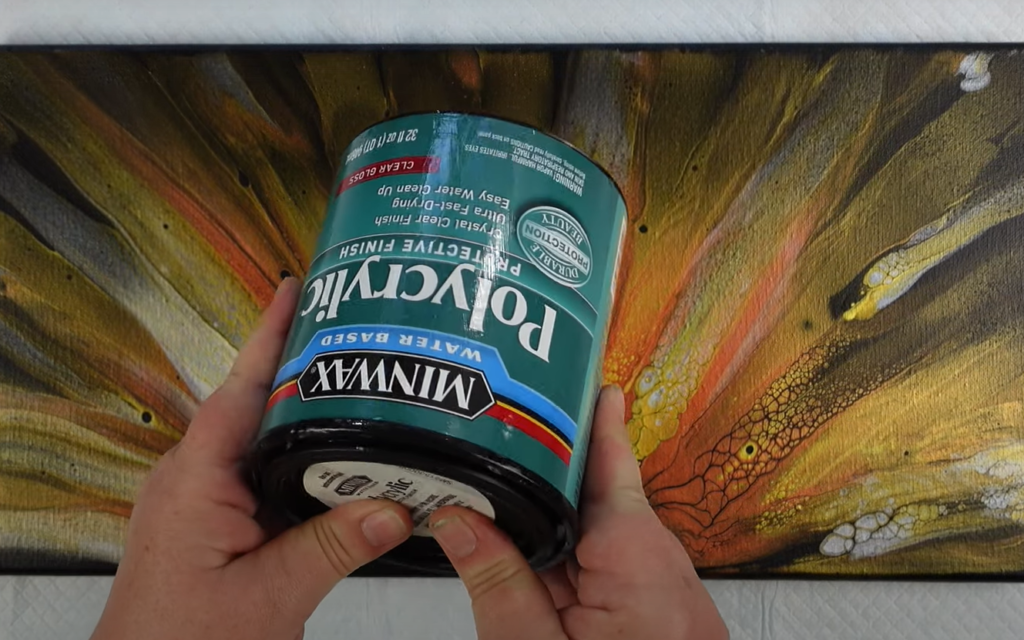
However, while Polycrylic can fend off casual contact with water, it’s not designed for prolonged exposure to water or very high-humidity environments. For situations where complete waterproofing is required, a different type of sealant may be more appropriate. Always remember to check the manufacturer’s instructions for more specific information about the product’s capabilities and best use cases.
What are the pros and cons of Polycrylic?
Polycrylic offers several advantages and disadvantages that you should consider before using it in your projects.
Pros of Polycrylic
- Durability: Polycrylic is known for its durable nature. It effectively protects painted surfaces from damage, scratches, and water, enhancing the lifespan of the applied area.
- Non-Yellowing: Unlike certain finishes like polyurethane, Polycrylic is non-yellowing. This means it remains clear over time, making it an excellent choice for light-colored or white surfaces.
- Fast Drying: Polycrylic dries faster than many other types of finishes, which can speed up project completion times.
- Easy Clean-Up: Because Polycrylic is water-based, it is incredibly convenient to clean up. Just use soap and water, and you’re good to go!
- Low Odor: Compared to oil-based finishes, Polycrylic offers the advantage of a low odor, rendering it a more enjoyable choice for working, particularly in enclosed spaces.
Cons of Polycrylic
- Not Heat-Resistant: Polycrylic is not resistant to high temperatures. Therefore, it might not be the best choice for items that will frequently be in contact with heat, like kitchen tables or trivets.
- Prone to Brush Strokes: If not applied carefully, Polycrylic can show brush strokes. A good synthetic brush and careful application can reduce this problem.
- Not Ideal for Outdoor Use: Polycrylic is water-resistant but not waterproof and doesn’t withstand prolonged sunlight exposure well, making it less suitable for outdoor projects.
- Can Bubble During Application: Polycrylic can bubble during application if over-brushed or shaken before use. These bubbles can create an uneven surface if they dry in the finish.
Remember to carefully consider these pros and cons before choosing to use Polycrylic for your projects.
What paint will stick to polyurethane?
Polyurethane finishes can be effectively coated with both oil-based and latex paints, as long as the surface has been adequately prepared. Usually, this includes cleaning the surface, sanding it lightly, and applying a primer to create a paint-friendly surface.
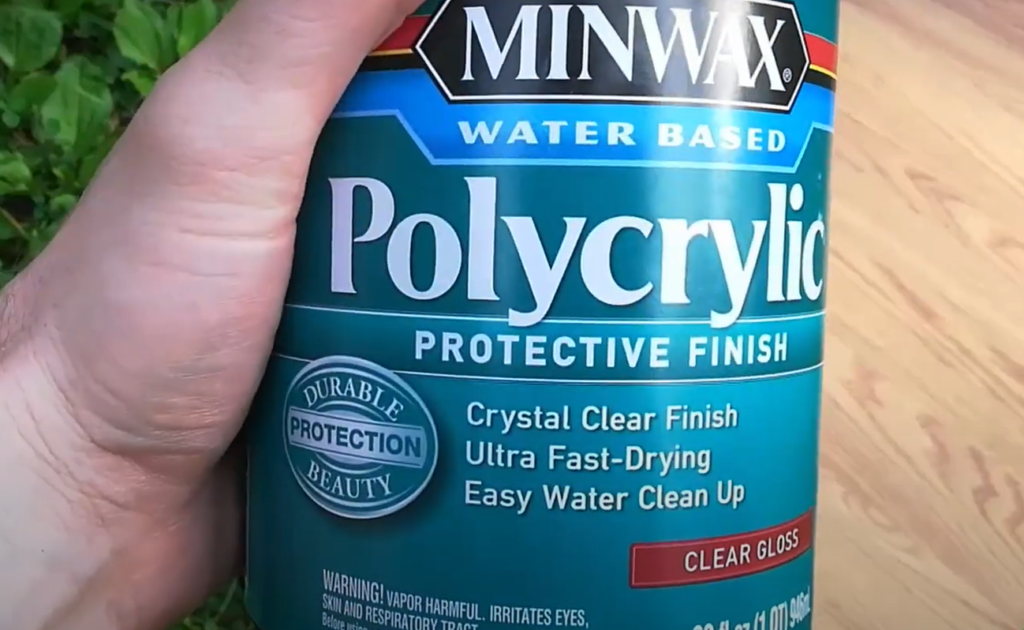
It is worth mentioning that oil-based paints tend to develop a yellowish tint as time goes on, particularly on lighter surfaces. Before applying any paint, it is always recommended to test a small area for compatibility. To achieve the best results, it is important to follow the instructions provided by the paint manufacturer.
Can I paint over a clear coat?
Yes, you can paint over a clear coat, but it requires careful preparation for a smooth and long-lasting finish. Typically, painting over a clear coat involves cleaning the surface thoroughly, lightly sanding the clear coat until it’s no longer glossy, and then applying a primer. This process creates a textured surface that allows the new paint to adhere more effectively. To achieve optimal results, it’s important to consistently choose high-quality paint and primer. Before starting, test a small hidden area first to ensure good adherence of the new paint to the old clear coat. Always follow the manufacturer’s instructions for each product to ensure optimal results.
Can I paint over polyurethane without sanding?
Painting over polyurethane without sanding is not typically recommended as it can lead to the paint peeling off or not adhering correctly. Polyurethane creates a smooth, glossy surface that doesn’t provide the best grip for paint. Sanding helps to roughen up this surface, providing a better “tooth” for the paint to adhere to. If sanding is not feasible, alternative options include using a bonding primer or a specially formulated paint that is specifically designed to adhere to smooth surfaces. To achieve optimal results, it is advisable to conduct a preliminary test on a small area to ensure proper adherence of the paint. Additionally, it is crucial to carefully follow the manufacturer’s instructions for the best outcome.
Does Polycrylic turn yellow?
No, Polycrylic does not turn yellow over time. This quality makes it a preferred choice for protecting light-colored or white surfaces. Unlike oil-based polyurethane, Polycrylic provides a clear and durable finish without altering the original surface color. However, it’s essential to apply it correctly and in the right conditions to prevent any clouding or discoloration. Always follow the manufacturer’s instructions for optimal results.
Is acrylic polyurethane the same as Polycrylic?
While both acrylic polyurethane and Polycrylic are clear coatings, they are not the same product and have different properties and uses. Acrylic polyurethane is a type of synthetic varnish used for finishing and sealing. It’s known for its high resistance to scratches, abrasions, and chemicals, but it is susceptible to yellowing over time, especially when exposed to sunlight. In contrast, Polycrylic serves as a water-based protective coat that maintains its clarity over time, as it does not yellow. Its formulation ensures long-lasting preservation and protection. However, it isn’t as resistant to heat or chemicals as acrylic polyurethane, making it less suitable for certain environments. Hence, the selection between acrylic polyurethane and Polycrylic primarily relies on the particular needs of the given project. Always follow the manufacturer’s instructions for optimal results with either product.
Useful Video: Polycrylic or Polyurethane: How and When to Apply | This or That DIY | Wood Finishing Basics
Conclusion
In conclusion, Polycrylic is a versatile and durable finish that provides many advantages, such as being non-yellowing, quick-drying, and easy to clean up with low odor. However, it does have some limitations, such as not being heat-resistant, prone to showing brush strokes, not ideal for outdoor use, and can bubble during application. When considering painting over Polycrylic or any other finish like polyurethane, proper preparation is crucial, including cleaning, sanding, and priming the surface. Both acrylic polyurethane and Polycrylic have their unique properties and uses, but choosing between them depends on the specific requirements of the project.
References:
- https://paintanalyzer.com/can-you-paint-over-polycrylic/
- https://www.diygeeks.com/can-you-paint-over-polycrylic/
- https://www.thewoodworkplace.com/can-you-paint-over-polycrylic-without-sanding/
- https://diymelon.com/can-you-paint-over-polycrylic/
- https://forum.woodcarvingillustrated.com/forum/woodcarving-illustrated/woodcarving/wood-finishing-and-painting/34463-painting-over-polycrylic


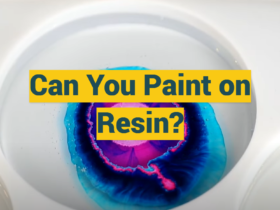
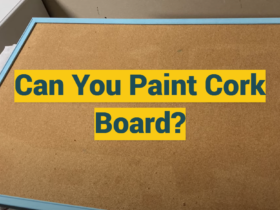
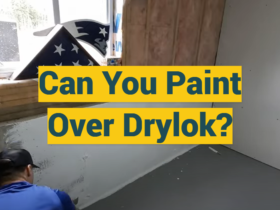
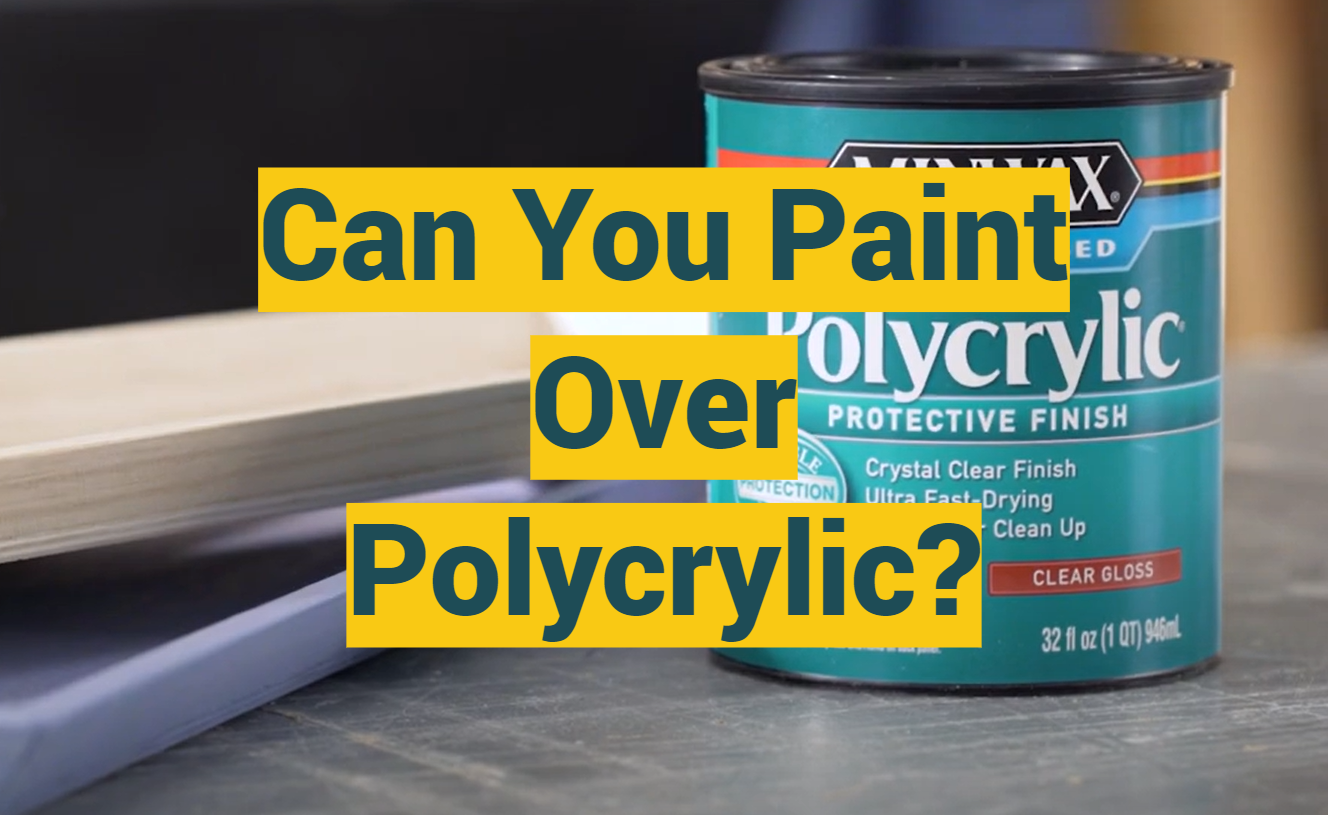


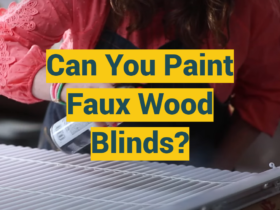

Leave a Review